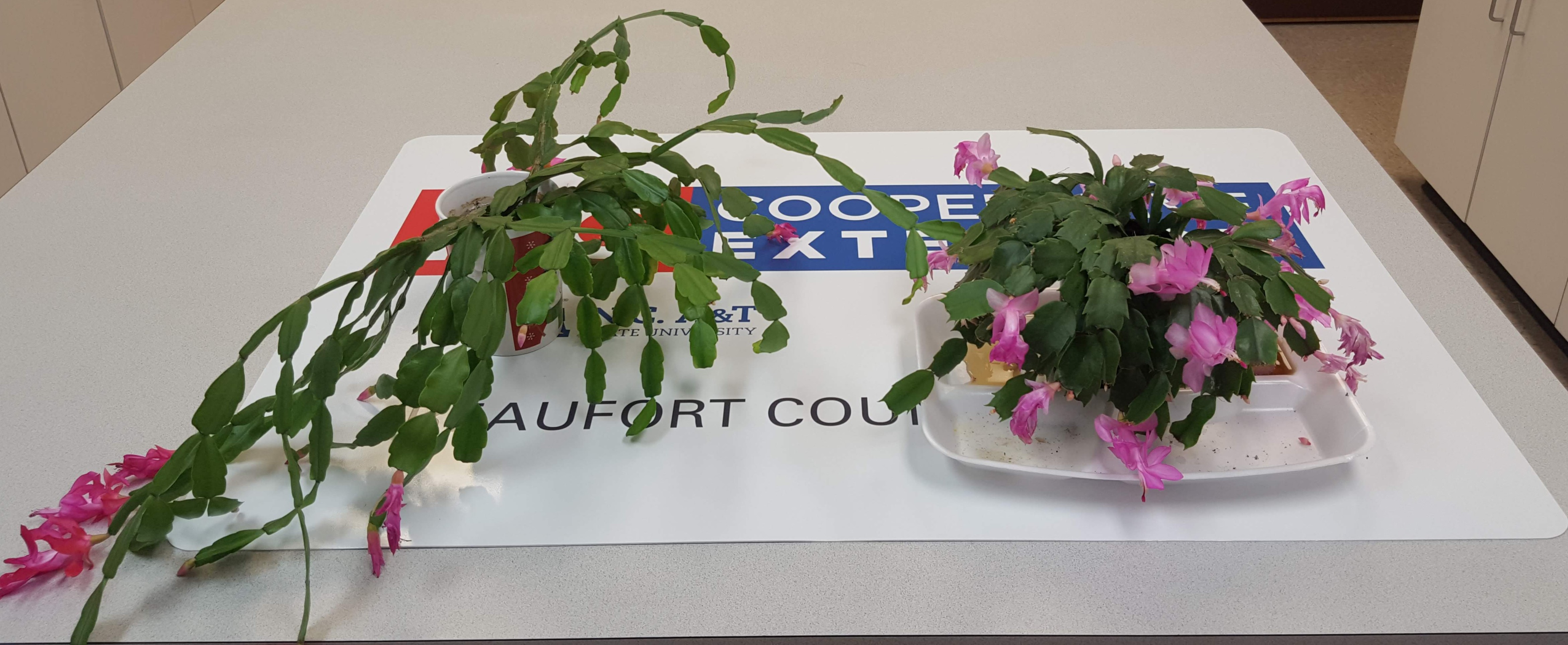Christmas Cactus in July
go.ncsu.edu/readext?1016022
en Español / em Português
El inglés es el idioma de control de esta página. En la medida en que haya algún conflicto entre la traducción al inglés y la traducción, el inglés prevalece.
Al hacer clic en el enlace de traducción se activa un servicio de traducción gratuito para convertir la página al español. Al igual que con cualquier traducción por Internet, la conversión no es sensible al contexto y puede que no traduzca el texto en su significado original. NC State Extension no garantiza la exactitud del texto traducido. Por favor, tenga en cuenta que algunas aplicaciones y/o servicios pueden no funcionar como se espera cuando se traducen.
Português
Inglês é o idioma de controle desta página. Na medida que haja algum conflito entre o texto original em Inglês e a tradução, o Inglês prevalece.
Ao clicar no link de tradução, um serviço gratuito de tradução será ativado para converter a página para o Português. Como em qualquer tradução pela internet, a conversão não é sensivel ao contexto e pode não ocorrer a tradução para o significado orginal. O serviço de Extensão da Carolina do Norte (NC State Extension) não garante a exatidão do texto traduzido. Por favor, observe que algumas funções ou serviços podem não funcionar como esperado após a tradução.
English
English is the controlling language of this page. To the extent there is any conflict between the English text and the translation, English controls.
Clicking on the translation link activates a free translation service to convert the page to Spanish. As with any Internet translation, the conversion is not context-sensitive and may not translate the text to its original meaning. NC State Extension does not guarantee the accuracy of the translated text. Please note that some applications and/or services may not function as expected when translated.
Collapse ▲I was working outside this past weekend, cleaning up the yard and had been helping my son with a project on his car. It sure was hot! When I went into the house to get more water and cool off a minute, I found that my daughter and wife were having a Christmas in July movie party! They were on their second movie when I came in. While it was hot this past weekend, I did not seem to feel any relief from the Christmas in July.
Speaking of Christmas, I had a sample come into the office this past Monday, from a Christmas cactus. A little note about Christmas cacti, they are not all the same species. This particular sample came from one that also has the common name Thanksgiving and/or Easter cactus (Schlumbergera truncata). The common names are synonymous because there are over 200 hybrid cultivars of S. truncata and S. russelliana. They are widely bred for their beautiful showy flowers in shades of red, pink, purple, orange, yellow, and white. The main way to tell is by looking at the cladodes. These are the leaf-like flattened stems of the plant. They do not actually have leaves. The cladodes of the S. truncata will have 2 to 4 spikes on them while the S. russelliana will be more rounded with no spikes. Another way to tell the difference is when they are in flower, true S. russelliana plants have purple to brown anthers and the S. truncata has yellow anthers. Of course, there is some bleedover in hybrids so you may have a little of each.

This picture shows S. truncata on the right and S. russelliana on the left, both in flower. Photo by Gene Fox.
So why am I talking about a Christmas cactus in July? While they are beautiful during the Thanksgiving and Christmas seasons, many of us keep them year-round. They prefer to be outside in the summer and fall seasons as long as it doesn’t get below 50°F. Unlike most other species in the Cactaceae family, they require more abundant moisture much like a succulent. They can be planted in light soil in containers or hanging baskets. However, they do not like to be in direct sunlight. Place plants outside under larger trees in dappled shade for the best results.
These beautiful plants have few issues. The issue I run into most often is under or overwatering the plants. They are also susceptible to mealy bugs and scale insects. This can be easily fixed with insecticidal soap or horticultural oil. There are very few other problems that are associated with these plants.
This brings me to the question of the week, “What happened to my Christmas cactus?” In conversation with an Extension Master GardernerSM Volunteer, the caller indicated that the plant was recently moved to a sunroom but they thought it had scale. Looking at the sample under the dissecting scope, it was clear that it had spent too much time in the sun. Like many of us, this time of year, it had blistered!
If you are having an issue in your home garden or landscape, send your questions to Gene Fox, Consumer Horticulture Agent with the North Carolina Cooperative Extension Service, please email Gene at gene_fox@ncsu.edu or call at (252)946-0111. You can also ask to speak to a Master Gardener! On Mondays and Wednesdays between 10:00 and 12:00, they are on the Greenline to answer all of your home horticulture questions. Check out our Facebook page, Beaufort County Master Gardeners, for The Plant of the Week and Food Garden Friday! Until then, Happy Gardening!



